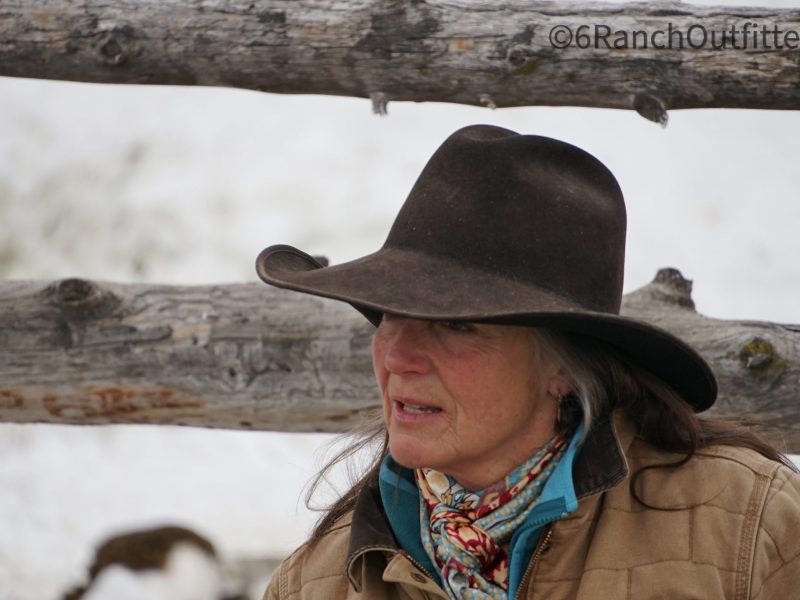
Succession Planning Q&A Part 2: Family Governance
This is the second in a series of question and answer sessions focused on succession planning between Western Landowners Alliance stewardship services director Hallie Mahowald and Howard Weiss, family office practice expert at Bank of America. If you have additional questions around succession planning that you would like to see answered in an upcoming session, please contact Hallie.
In our first discussion on succession planning, you emphasized the importance of a strong family governance structure and how, without it, a succession plan is more difficult to implement. How do you define “family governance”?
Family governance is the process through which a family makes decisions surrounding its businesses, properties and financial investments. It incorporates governing bodies such as a board of directors, trusts, partnerships and various committees where needed. Governance also involves establishing in writing or otherwise, a distinct set of values and culture.
What key factors might drive the type of governance structure a family puts into place?
First and foremost, the main factor is the presence or absence of a family business; a ranch certainly counts as a family business. The number of owners or shareholders also influences the type of governance structure. If there is a sole owner and that ownership is passed to a sole owner in the next generation, the governance structure is not that complex. Another factor along these same lines is the extent of real properties owned collectively by the family and would include residences and commercial real estate. A third influencing factor would be the existence of family trusts and charitable entities.
Let’s look at the business side first. What governance options do families adopt and what determines that?
Here again, the ownership structure will largely determine that. Sole ownership usually does not require extensive oversight structures. However, in cases where the business and ranch may have multiple owners—with many not engaged in its management and operations—they will tend to adopt a more formalized structure. The form of ownership may also dictate the type of oversight. For example, is the ranch owned outright, in a partnership, within a trust or in corporate form? If it is owned in corporate form, it is likely you will need a formal board of directors, as state laws and regulations usually require it. Additionally, corporations are usually required to file such documents as a corporate charter, articles of incorporation and by-laws. Partnerships, including LLCs, generally are not mandated to have a formal board of directors, but they can elect to have one. Some partnerships elect to establish a board of advisors or advisory committee, which can act like a board, but without the legal formalities. However, LLCs and partnerships are also governed by state laws and regulations. For example, all 50 states have enacted LLC statutes and require articles of organization.
Whether a formal board or advisory committee, what is their make-up in terms of family and non-family members?
The composition of a family governing entity depends upon the family’s longer-range intention to own, oversee and/or manage the business or ranch. Where it actively manages the ranch or business, the family will generally be in the super majority—at least 2/3—on the board and will either retain full ownership or a significant majority of the ownership. They are unlikely to cede control in any way. Having said that, even these families will appoint one to a few independent directors. Frequently, the independent directors are close financial or legal advisors and may also include a business associate knowledgeable in their respective business or ranch operations.
On the other hand, when the business ownership starts moving to succeeding generations, family members may no longer be running the enterprise even though they will continue to own it. As non-family managers are brought in, governing boards will tend to include a more even balance between family and independent directors as the CEO or ranch manager may have a seat on the governing entity as well. Most, however, are likely to retain a family majority on the board.
When a family owns a ranch in corporate form, what are some of the common roles and responsibilities of a formal board of directors?
While there are always differences among families, boards are generally tasked with overseeing and frequently approving the compensation of the chief executive or manager and also reviewing his or her performance. Furthermore, board of directors are responsible for guiding management succession. Some other common areas include setting dividend and shareholder redemption policies and formulating family employment practices. Boards will generally approve business or ranch expansion as well as the assumption of significant debt.
We have also heard of a family council. What are those and how are they different from some of the other structures we have discussed?
Family councils exist where the family is quite large in numbers across multiple generations. In the case of an operating ranch, a form of family council could be appropriate when only a few members are engaged with the ranch operations and where there is a board of directors (if a corporation) or an active advisory committee (if an LLC or family limited partnership). The council would consist of those non-operating family members with a designated member of each family wing among those serving on it. The council is linked to the ranch operations through a board or advisory committee, providing input into such issues as family employment policies, internships, dividends, succession planning, expansion or even sale.
Some family businesses, including farms and ranches, are owned through trusts. We will cover the estate planning aspects of trusts in a later article, but what are some of the governance issues one encounters when creating and then administering trusts?
Trusts have their own unique set of governance issues and challenges. I should start out by referencing a prior response and pointing out that family ranches could be directly owned through a limited liability corporation, which, in turn, is owned by a trust. Therefore, two governance entities could come into play.
Looking at trusts, there are several points of focus to discuss:
The Pool of Trustees. When selecting trustees, you generally pick from three pools of candidates: individuals, professionals and institutional/corporate. Leaving aside for the moment the number of trustees you may have, individual trustees could be family members, business associates or close friends of the family. They bring knowledge of the underlying family dynamics and may be in a good position to work through disputes. Some of the common issues are aging, disability and succession. As for professional trustees, the common candidates would be your CPA or attorney. They bring expertise in areas commonly important to the administration of trusts and frequently know the family well. Common issues include succession and potential conflicts related to compensation. Both advisors are generally compensated directly for professional tax, accounting and legal services provided to the family so there is sometimes an issue as to what services they should be providing as a paid trustee versus a professional advisor. You may also face difficulties removing a professional trustee unless the trust document provides for a smooth process. With corporate trustees, you will face certain operating policies of the respective institution, but you essentially get a conflict free trustee and one that is fairly easy to replace should you decide to do so. You also do not have to worry about succession.
Alternative Trustee Structures. Next, you should determine what trustee structure you want. There are a range of options. One can have just one trustee, either an individual, professional advisor (CPA or attorney) or a corporate trustee. A second option could be a professional and individual family trustee. This arrangement gives you the advice of a professional tax or legal person coupled with someone who can represent the family. A third option is to put in place a professional and corporate trustee. This brings in the administrative services that a corporate fiduciary can offer. A fourth option is to combine a family, professional and corporate trustee so as to cover all of the bases. Then, there is another structure that some families are increasingly adopting. This is the introduction of a trust protector provision and is used in conjunction with the other options. A trust protector can be an individual or even a committee of individuals. Their role is to oversee the activity of the trustees. They generally can remove the trustees, sometimes without cause. Some trust documents enable them to intervene on major decisions and in certain instances, they can change the situs of a trust without court approval and decant certain provisions of the trust. Most states have specific regulations surrounding the powers of a trust protector.
Dynasty Trustee Governance. Long term dynasty trusts will sometimes bifurcate the trustee duties among two or three distinct sets of responsibilities. Some will have an administrative trustee alongside an investment trustee. The administrative trustee serves as a custodian, prepares fiduciary tax returns and processes discretionary distributions. The investment trustee invests the assets, selects the advisors and monitors the performance. Some families will also establish a distribution trustee or committee to approve discretionary distributions. State laws must allow for this bifurcation of duties with Delaware and South Dakota among the more popular jurisdictions.
Collective Skill Set of Trustees. As a group, your trustees carry significant responsibilities. As such, they should have a good grounding in trust laws and principles as well as in prudent investing. Where those investments include a business, ranch or farm, at least one of the trustees should be skilled in overseeing those assets. Additionally, they need to have a clear understanding of the founder’s intent so as to formulate sound distribution policies. Moreover, the trustees may have to adapt to changing circumstances as times change. Some trustees are also called upon to be good thought partners with the family’s estate planning attorneys in formulating additional wealth transfer plans. Finally, a good trustee is also an advisor and even a mentor to the younger generation.
We hear quite a bit today about family offices. How do you define a family office and who is likely to establish one? Is it appropriate for a ranch-owning family and if so, what profile should the family have?
You are right. There is a lot of chatter about family offices. Strictly speaking, a family office is a governance structure designed to oversee a family’s investments, tax and wealth transfer planning activities, insurance and risk management, financial accounting and reporting functions and philanthropy. A key feature of a family office is to then manage and direct the various family advisors, financial and otherwise. A family office can be structured as a single family office with its own staff or it can be part of a broader enterprise. Among the choices are joining a multi-family office founded by another family. Another option is to engage the services of a multi-family office program offered by some of the larger financial institutions. Ranch-owning families might have a family office where they own a range of other investments such as commercial real estate, energy properties, private equity and marketable securities portfolios. The family office would oversee the total enterprise. Frequently, non-resident owners could have a family office in their hometown that would play a role in the ranch oversight.
It seems that some families are able to successfully pass a business or ranch from the founder to the next immediate generation if there is an able successor. However, how do families try to preserve their heritage for several generations ahead? What are some key practices you have observed?
Much of this depends upon generating and preserving an interest in the business or land. Where a family has several members living in states and cities far from the ranch, it is more difficult. In those cases, the family leader will work hard to host an annual family retreat on the ranch. The retreat would certainly have its social elements, but it would also have an important business component. The business meeting would encompass a review of the ranch operations over the past year along with projections for the upcoming year. Anticipated capital needs and new business opportunities are also issues frequently discussed.
Another practice that is growing in popularity is to design what some call a family charter or family constitution. In its broad sense, a family charter is a document that expresses how the family makes decisions and how its business operations should be owned, managed and governed. To better illustrate this practice, here are some typical components of a family charter:
- Set of family values and mission, even drafting a simple mission statement
- Business governance principles
- Wealth transfer principles
- Selection of trustees and their succession
- Trust distribution policies
- Family governing entities
- Philanthropic mission and grant strategies
- Roles of family members
We discussed the value and importance of welcoming external advisors, managers and directors, but how does one effectively integrate family members into its governing structure?
This is an issue of role selection and then training and preparation. As for roles, a family member can serve in one or a combination of three different roles.
Manager. This role may encompass being the ranch manager or foreman. In some instances, there could also be a role of financial manager or family CFO. If a family has more advanced governance entities, a member could be a family trustee or the family office manager, if there is one.
Director. This could involve having a seat on a family board, advisory committee, investment committee or charitable foundation board, if there is one.
Shareholder. Back to your earlier question on preserving the family heritage: having a highly interested base of non-manager, informed and proactive shareholders will help a lot toward continuing a family legacy.
We covered a range of family governance topics, but could you offer a few summarizing tips on instituting and maintaining strong governance?
- The program and structure have to involve family participation at some level. As families grow and move through the generations, not everyone can or even wants to be involved in family business matters. However, it is important for some to be engaged. This does not have to be at the exclusion of welcoming external managers and directors.
- One should always be looking at succession, whether that is for a ranch manager, trustee or director.
- Some program of communications to the entire family is always useful. Family retreats and annual meetings always serve a good purpose.
- One should not be afraid to stop at periodic intervals and review where they are, and where they are going. Embarking on a new strategic plan is sometimes a good idea, particularly as the next generation is emerging to assume leadership roles.
Howard Weiss is a Senior Vice President and Family Office Practice Expert at Bank of America, specializing in the family office and private foundation markets. He advises clients on how to establish and run family offices and also provides strategic advice to wealthy families in the areas of investment policy, wealth transfer, business succession planning, philanthropic management and family governance. In the area of private foundations, he assists clients with governance, investment policies and grant making. He is a member of the board of directors of the Morris Goldseker Foundation of Maryland and the Mary and Daniel Loughran Foundation in Washington, D.C. Weiss has published two books on wealth management: The Philanthropic Executive–Establishing a Charitable Plan for Individuals and Businesses and The 100-Year Wealth Management Plan. Weiss holds an MBA from the Wharton School of the University of Pennsylvania and a Bachelor of Science degree from the Ohio State University. He is also a Certified Financial Planner and holds a Master of Science Degree in Financial Planning from the College for Financial Planning.
*The views and opinions expressed in this article are those of the author(s). Publishing this content does not constitute an endorsement by the Western Landowners Alliance or any employee thereof either of the specific content itself or of other opinions or affiliations that the author(s) may have.*




